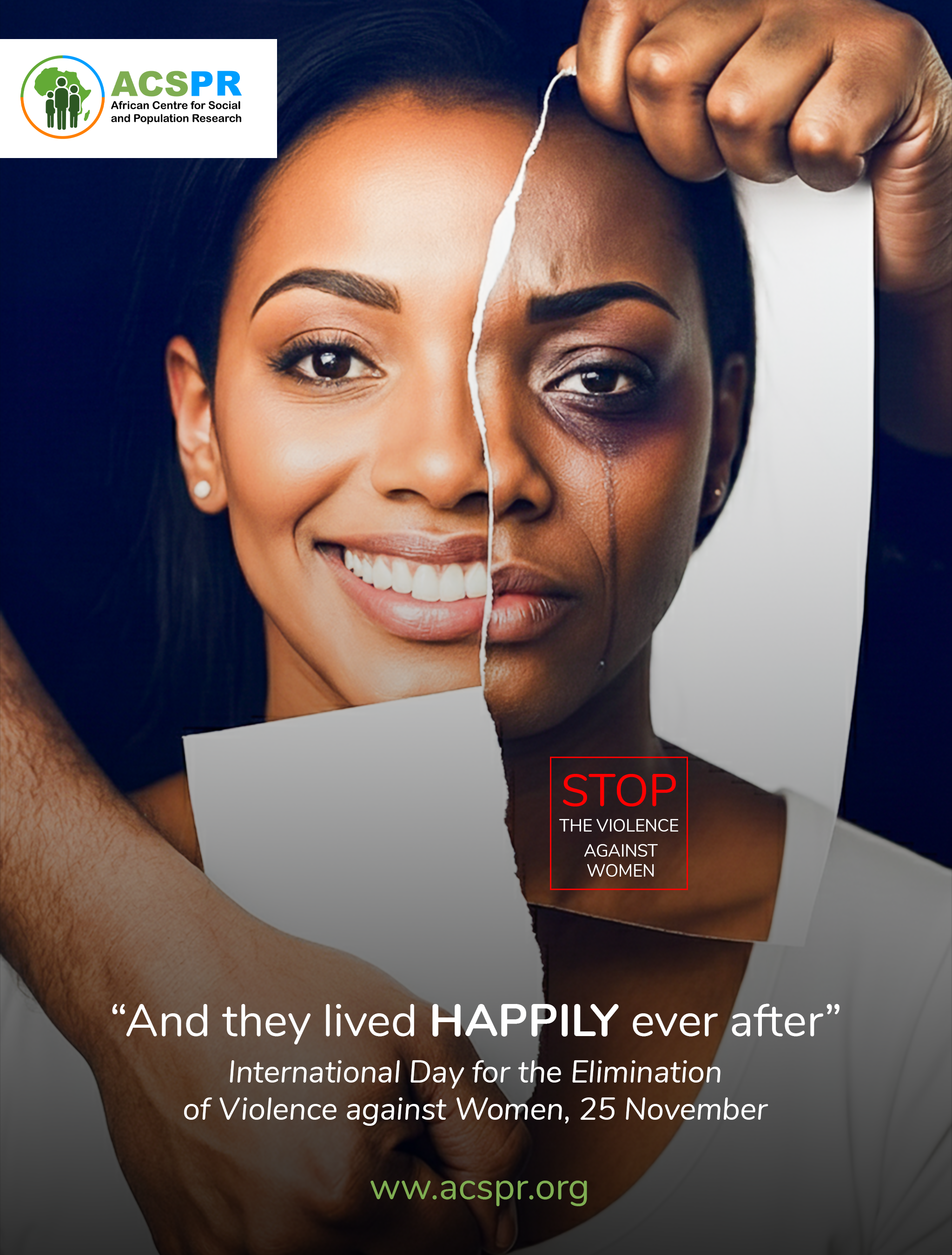✍️ Authored by the ACSPR Team
Shaping Africa’s Future with Evidence, Equity, and Innovation for Impact.
“She didn’t report it - because she knew no one would listen.”
Shaping Africa’s Future with Evidence, Equity, and Innovation for Impact.
“She didn’t report it - because she knew no one would listen.”
For millions of women, girls and increasingly men and boys - gender-based violence (GBV) is not a headline, a statistic, or a global campaign theme.
It is a daily reality, lived quietly, painfully, and often in silence.
It is a daily reality, lived quietly, painfully, and often in silence.
Every year, the world observes the 16 Days of Activism Against Gender-Based Violence, a global movement calling for an end to all forms of violence based on gender. But as conversations grow louder, one truth remains: awareness without action protects systems - not survivors.
🌍 The Global Picture: A Crisis Without Borders
Gender-based violence is one of the most widespread human rights violations worldwide. According to UN Women (2023):
● Nearly 1 in 3 women — around 736 million globally — have experienced physical or sexual violence in their lifetime.
● The majority of this violence is perpetrated by current or former intimate partners.
Despite decades of advocacy, harmful norms, silence, and inadequate protections continue to allow GBV to thrive in homes, schools, workplaces, and public spaces. For many survivors, justice remains out of reach.
🌍 Sub-Saharan Africa: The Epicenter of Harmful Norms
In Sub-Saharan Africa, the magnitude of violence is intensified by entrenched inequalities, poverty, and deeply rooted social norms.
According to UNFPA regional estimates (2023):
● The region records some of the highest intimate partner violence rates globally, with
DR Congo (31.9%) and Equatorial Guinea (25.6%) among the highest.
DR Congo (31.9%) and Equatorial Guinea (25.6%) among the highest.
● Countries with the lowest reported levels (e.g., Comoros at 7.3%) may still face underreporting due to stigma, fear, and cultural silence.
GBV in the region is also reinforced by:
● High rates of child marriage
● Limited access to sexual and reproductive health services
● Lack of social protection systems
● Weak implementation of laws
🇺🇬 Uganda: A Story of Progress and Pain
Gender-based violence remains one of Uganda’s most pressing public health and human rights concerns.
According to the Uganda Demographic and Health Survey (UDHS 2022):
● 23% of adolescent girls aged 15–19 have begun childbearing
● 44% of women and 39% of men have experienced physical violence since age 15
● 17% of women and 6% of men report having experienced sexual violence in their lifetime
While the numbers show improvement from previous surveys, they remain alarmingly high — signaling a crisis far from resolved.
📌 Inequities Deepen the Risk
● Rural vs. urban: 25% vs. 18%
● Education matters: Only 6% of girls with secondary education have begun childbearing compared to 31% of girls with no/primary schooling.
● Wealth matters: 32% among the poorest households vs. 12% among the wealthiest.
These numbers reveal a painful truth:
Where a girl is born determines whether she will face violence — not because she chooses it, but because the system allows it.
🟥 Forms of Gender-Based Violence in Uganda
GBV appears in many forms, including:
● Physical violence
● Sexual violence
● Harmful practices (FGM, child marriage, widow inheritance)
● Psychological and emotional abuse
● Economic deprivation and denial of resources
🚧 Why the Crisis Persists
Even where laws exist, survivors face barriers such as:
● Underreporting due to stigma and fear
● Normalisation of violence as "discipline"
● Limited access to survivor-friendly services
● Weak enforcement of legal protections
A 2011 survey showed 58% of women and 44% of men in Uganda believed a husband was justified in beating his wife for "behavioural reasons" - a mindset still observed in parts of the country today.
💔 The Cost: Human - Economic - Generational
GBV impacts not just individuals, but the fabric of society:
● Increased maternal and neonatal mortality
● Depression, trauma, suicide risk, and long-term health complications
● School dropout, poverty cycles, and intergenerational violence
● Reduced workforce participation and national productivity
According to the World Bank, every additional year of schooling for girls can:
● Increase their future lifetime earnings by 10–20%
● Boost a country’s GDP per capita by up to 10%
Ending GBV is not just a moral obligation - it is an economic strategy.
🔥 What Now? The Call to Action
Ending gender-based violence requires a multi-sectoral, transformative approach:
● Strengthen law enforcement and accountability
● Provide survivor-centred services including medical, psychosocial, and legal support
● Integrate comprehensive sexuality and relationship education in schools
● Engage communities in norm-shifting dialogues
● Include men and boys as allies, not bystanders
● Fully fund prevention and response services
● Be an active bystander: call out harmful jokes, attitudes, and behaviour
👉 This week, commit to one action:
Share this article, support a survivor organisation, educate yourself, or speak out.
Because silence protects perpetrators - not survivors.
Share this article, support a survivor organisation, educate yourself, or speak out.
Because silence protects perpetrators - not survivors.
💛 Final Reflection
Gender-based violence is not inevitable - it is preventable.
It reflects how societies value - or fail to value - women and girls.
It reflects how societies value - or fail to value - women and girls.
During these 16 Days of Activism and beyond, we must move from awareness to accountability and from conversation to change.
The data is clear.
The solutions exist.
Now - we need the will to act.
The solutions exist.
Now - we need the will to act.

